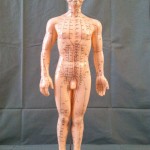Stroke rehabilitation and recovery should begin as soon as possible. Stroke rehabilitation, as soon as possible, in the form of body work and exercise is key to optimizing a person’s stroke recovery. Craniosacral Therapy and energetic unwinding can support the healing and recovery process in a way few other therapies can. These two related therapies are extremely gentle and non-invasive. Craniosacral therapy… Read more →
Author: Andrea Hambly., Olympia, Washington
Dystonia: Muscle Tone Disorder
Dystonia can be debilitating Dystonia refers to irregular, often sustained, muscle contractions causing the body parts to become temporarily twisted into contorted positions. The person experiences constant pain and can no longer use these body parts in a normal fashion. This condition, a neurological movement disorder, may affect large areas of the body, one side of the body, or small muscle groups.… Read more →
Sinusitis: Reducing inflammation & swelling
Craniosacral therapy can help alleviate sinusitis. Sinusitis is a common condition, where the mucus of the sinuses (hollow spaces above and behind the nose, and in the cheeks) become painfully inflamed and swollen. The swelling often partially, or completely, blocks the small openings (meatuses) to the sinuses, that allow mucus to drain into the nasal passages. The sinuses (cavities) are normally… Read more →

Asthma: Alternative Therapies that Work
Asthma is a scary condition. Because asthma affects the airways, we are reminded how vulnerable we are and how much we depend on fresh air. Cigarette smoke, perfumes, chemical fumes, dust, and mold can trigger an asthma attack and land you in the hospital’s emergency room. Medications, among them beta blockers and antibiotics, have been shown to increase the incidence of asthma. Lack of fresh air… Read more →
Frozen Shoulder Syndrome
Frozen shoulder syndrome is caused by inflammation in the shoulder joint. Frozen shoulder syndrome, also called adhesive capsulitis of the shoulder, is a very painful restriction of the shoulder joint caused by inflammation of the connective tissue (capsule) that surrounds, and holds together, the shoulder joint (gleno-humeral joint). It is 2-3 times more common in women than men, and mostly occurs between… Read more →
